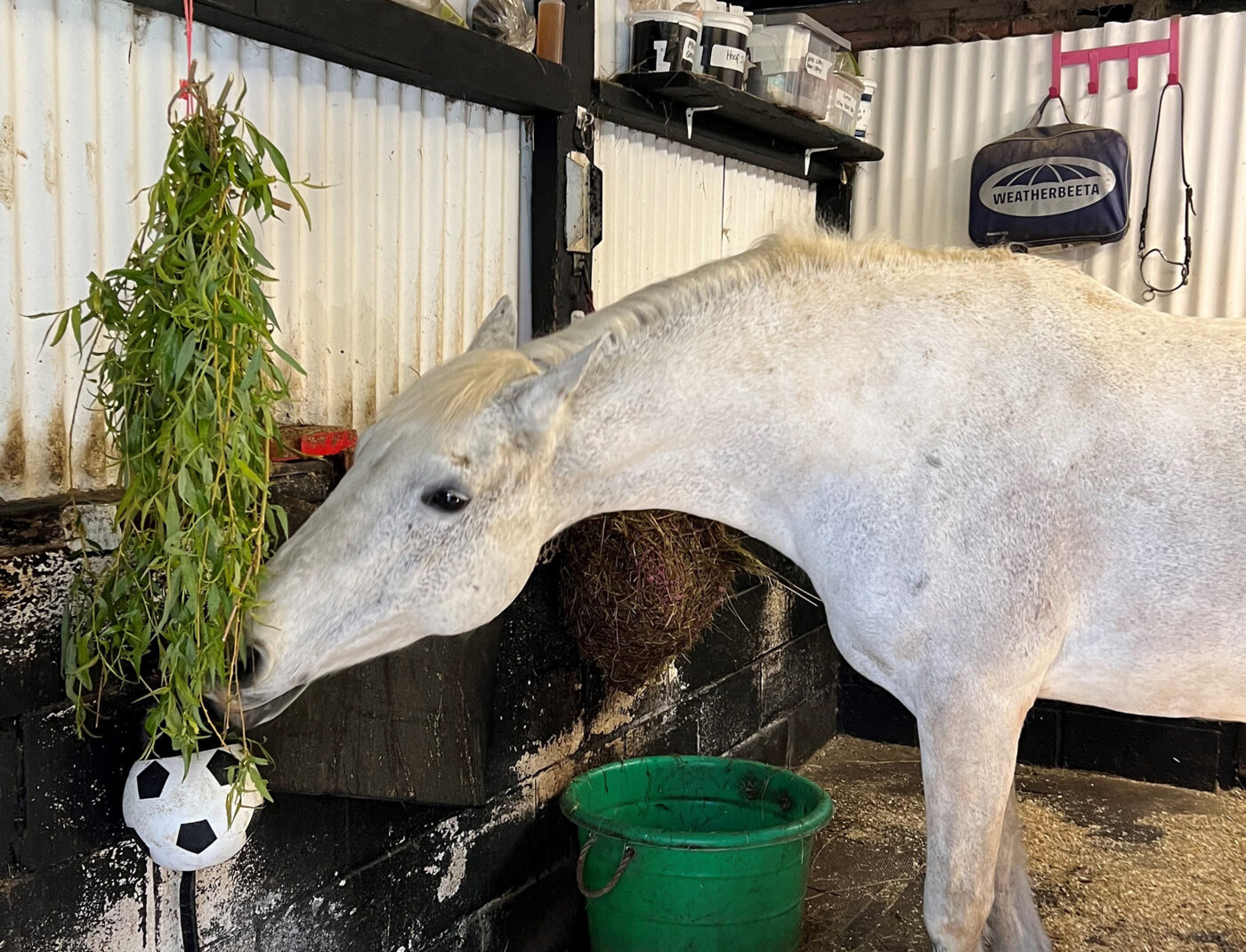Analysing Hedgerow Haynets
It is now widely accepted that equine obesity is a major welfare concern in the UK. In 2023, 56% of the horses we saw at weighbridge and feed advice clinics were overweight, which reflects levels of obesity regularly cited in the literature. Owners of overweight horses and ponies are often keen for advice on the best ways to manage their horses’ weight whilst still ensuring their welfare and nutritional needs are being met.
In situations when these horses need to be stabled or turned out on ‘no-grass’ areas to limit their calorie intake, it can sometimes become a challenge to keep them entertained without being able to supply ad lib forage. Providing diversity for the stabled horse has become popular in the form of a hedgerow hay net, where hedgerow plants are mixed with or fed alongside the normal forage ration. From conversations with horse owners, it’s become clear that many are feeding these plants, sometimes at high levels, assuming that they offer no calorie or sugar contribution to the diet when that’s simply not the case.

To help put these figures into perspective for horse owners, we have recently been reviewing analyses results for various hedgerow plants and weeds which we’ve previously sent to the lab for testing. The table below shows how much 1kg of each of these plants will provide of various nutrients per day. We can see that the levels really vary between different plants. Of particular note is the fact that the DE (digestible energy, or calorie content) and WSC (water soluble carbohydrates including the sugar and fructan) contents of poplar are very similar to levels found in an average hay. Whilst the other plants contain lower levels of DE and WSC, they definitely still cannot be classed as being calorie or sugar free. It’s important to remember though that these results should just be considered as a guide, as they only represent a snapshot in time and levels may vary depending on lots of different factors.
How much does 1kg of different hedgerow plants provide?
| Nutrient* | Sticky Weed | Cow Parsley | Hazel | Hawthorn | Willow | Ash | Poplar | Average Hay |
|---|---|---|---|---|---|---|---|---|
| Digestible Energy (DE) (MJ) | 1.47 | 2 | 2.31 | 3.79 | 3.95 | 4.99 | 8.15 | 6.5 - 10 |
| Dry Matter (g) | 135 | 186 | 216 | 332 | 380 | 451 | 828 | 840 - 920 |
| Crude Protein (g) | 15 | 28 | 49 | 38 | 52 | 56 | 115 | 40 - 130 |
| Oil (g) | 5 | 8 | 8 | 14 | 16 | 24 | 38 | 8 - 28 |
| NDF (g) | 43 | 75 | 75 | 133 | 182 | 178 | 434 | 420 - 600 |
| ADF (g) | 42 | 55 | 49 | 107 | 147 | 146 | 266 | 250 - 370 |
| Starch (g) | 16 | 13 | 17 | 35 | 14 | 21 | 4 - 28 | |
| WSC (g) | 28 | 25 | 10 | 14 | 26 | 28 | 72 | 75 - 100 |
*Analysis reported on an as fed basis
More information on hedgerow hay nets can be found here, but these are some key things to remember if you’re thinking of incorporating any of these plants for your horse or pony:
- Hedgerow plants can be good for adding variety to your horse’s diet but should not be considered calorie-free.
- Make sure you are not feeding anything which is toxic to horses. The British Horse Society and RSPCA have useful guidelines on their websites to help with identification of poisonous plants.
- Feed in small amounts (e.g., a couple of handfuls or 500g maximum of each plant type) and introduce new feed materials gradually.
- If your horse is overweight, consider whether using straw to replace a portion of their hay or haylage ration may be a better choice to slow down their eating time and keep them busy for longer. More information on feeding straw can be found here.
- If you or anyone on your yard competes under rules, bear in mind that picking weeds and herbs or other plants for your horse could increase the risk of NOPS contamination and is best avoided. Click here for further information about prohibited substances.
For more information on what to feed your horse or pony or for help and advice on all aspects of feeding call the Dengie Feedline: 01621 841188 or complete our Feed Advice Form.


